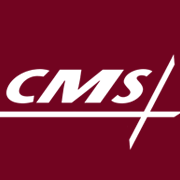American Medical Association
See the following -
Breaking Down the Role of Patient Engagement in Meaningful Use
 Patient engagement plays a great role in meaningful use, despite much industry debate and conflicting interests. Patient engagement is not just a new patient-centered care philosophy. For providers and hospitals participating in the EHR Incentive Programs, patient engagement is a critical part of receiving incentive payments. Between the different stages of meaningful use and new rule proposals amending the program, the requirements for patient engagement are not always clear.
Patient engagement plays a great role in meaningful use, despite much industry debate and conflicting interests. Patient engagement is not just a new patient-centered care philosophy. For providers and hospitals participating in the EHR Incentive Programs, patient engagement is a critical part of receiving incentive payments. Between the different stages of meaningful use and new rule proposals amending the program, the requirements for patient engagement are not always clear.
- Login to post comments
Complaints about Electronic Medical Records Increase
Last month, the nation’s largest union of registered nurses sent a letter to the FDA asking for broader and more stringent oversight of electronic records systems and of computerized physician-order entry systems, which allow clinicians to log treatment instructions for patients. The National Nurses United, as part of its broader campaign highlighting the potential dangers of “unproven medical technology,” says FDA officials should test electronic medical records as rigorously as they might a new drug or an artificial hip implant...
- Login to post comments
Doctors like EHRs even less than they did five years ago
But do the clinicians, physicians, nurses and specialists actually using the software like EHRs any more than they did five years ago? No, they do not, at least according to the results of a study published by the American Medical Association and the American College of Physicians' AmericanEHR division. Physicians, rather, have are grown increasingly dissatisfied with their electronic health records software during the last five years.
- Login to post comments
EHR Burdens Leave Docs Burned Out, in Critical Condition
 The electronic medical records that came with a promise of improving care efficiency are instead forcing physicians to spend more face time with a computer screen than with their patients. An observational analysis and survey of 57 primary care and specialty physicians in four states that was detailed this week in Annals of Internal Medicine shows that for every hour a physician spends providing direct clinical face time with a patient, nearly two additional hours are spent on EHRs and administrative tasks...
The electronic medical records that came with a promise of improving care efficiency are instead forcing physicians to spend more face time with a computer screen than with their patients. An observational analysis and survey of 57 primary care and specialty physicians in four states that was detailed this week in Annals of Internal Medicine shows that for every hour a physician spends providing direct clinical face time with a patient, nearly two additional hours are spent on EHRs and administrative tasks...
- Login to post comments
EHR Tasks Take Up Half of the Primary Care Physician’s Workday
It’s practically become a mantra in healthcare: EHRs take up too much of physicians’ time. But just how much time do doctors spend on EHR-related tasks? A new study out of the University of Wisconsin and the American Medical Association dug deeper. From 2013 to 2016, researchers analyzed 142 family medicine physicians, all of whom used an Epic EHR, at a system in southern Wisconsin. All data was captured via EHR event log data during clinic hours (8:00 a.m. to 6:00 p.m. Monday through Friday) and non-clinic hours...
- Login to post comments
Physician EHR Use, Workload Trumping Face Time with Patients
For every hour physicians spend with patients, they spend another two hours on physician EHR use and deskwork, according to a recent study from the American Medical Association. The AMA study highlights what many consider the primary issue with the increasing prevalence of physician EHR use: the significant workload the technology adds for providers...
- Login to post comments
Significant Threats to Patient Safety from Healthcare Provider Overload and Burnout Must be Addressed
 Sepsis Alliance and the High Reliability Organization Council (HROC), two leading national advocates for patient safety, are raising the alarm on shortages in healthcare personnel, and the increase in data overload and medical provider burnout that is putting more and more patients at risk. Examples include long wait times to get appointments (which affects access to care), misdiagnoses that delay care, wrong-site surgeries, and other safety failures...
Sepsis Alliance and the High Reliability Organization Council (HROC), two leading national advocates for patient safety, are raising the alarm on shortages in healthcare personnel, and the increase in data overload and medical provider burnout that is putting more and more patients at risk. Examples include long wait times to get appointments (which affects access to care), misdiagnoses that delay care, wrong-site surgeries, and other safety failures...
- Login to post comments
Why Suicide Prevention Is Part of Population Health Strategy
As hospitals and health systems recognize the need to devote more time and attention to population health management and improving community health, more effort correspondingly must be focused on behavioral health services. In response, the American Hospital Association has launched an initiative to assist hospitals with behavioral health...
- Login to post comments